2-Methyl-4-isothiazolin-3-one
Synonym(s):2-Methyl-3(2H)-isothiazolone
- CAS NO.:2682-20-4
- Empirical Formula: C4H5NOS
- Molecular Weight: 115.15
- MDL number: MFCD00013254
- EINECS: 220-239-6
- SAFETY DATA SHEET (SDS)
- Update Date: 2024-05-22 11:23:49

What is 2-Methyl-4-isothiazolin-3-one?
Description
Methylisothiazolinone (MI) is an isothiazolinone-derived biocide used for controlling microbial growth in industrial and household products, often in a mixture with 5-chloro-2-methyl-3-isothiazolone (MCI). MI is active against Gram-positive and Gram-negative bacteria, fungi, and yeast with MIC values of 0.0045, 0.0015, >0.01, and 0.0065% (w/w) for S. aureus, P. aeruginosa, A. niger, and C. albicans, respectively, when used alone. MIC values are 7 to 200-fold lower when MI is used in combination with MCI. MI decreases neurite outgrowth of rat cortical neurons when used at concentrations of 0.1-3 μM and inhibits Src family kinases in cell-free assays. MI, alone and as a mixture with MCI, can elicit contact sensitization.
Description
Methylisothiazolinone, along with other isothiazolinones, is a biocide widely used as a preservative in personal care products. It is also used in many industrial processes, such as paint and paper manufacturing, metalworking, mining, and sanitizing.
Because methylisothiazolinone is a strong cytotoxin, its use is under fire because of its dangers to humans and the environment. It is especially problematic when it is added to products such as lotions that remain on the skin.
In recent years, the European Union has begun to crack down on potentially hazardous preservatives in cosmetics. In particular, earlier this year, the?combination of methylisothiazolinone and methylchloroisothiazolinone was restricted, and the use of methylisothiazolinone by itself is scheduled to be banned in 2017.
The EU’s extensive restrictions have severely reduced the number of preservatives allowed for use in personal care products. And bans on animal testing for cosmetics make it unlikely that new biocides will be available in the foreseeable future.
The Uses of 2-Methyl-4-isothiazolin-3-one
Methylisothiazolinone is a preservative compound widely used in cosmetics. It is a contact allergen and sensitiser. Methylisothiazolinone has recently been identified as a neurotoxin that can damage nerve endings with repeated exposure.
What are the applications of Application
2-Methyl-4-isothiazolin-3-one is a potent biocide useful for controlling microbial growth
Properties of 2-Methyl-4-isothiazolin-3-one
| Melting point: | 254-256 °C(lit.) |
| Boiling point: | bp0.03 93° |
| Density | 1.25 (14% aq.) |
| storage temp. | 2-8°C |
| solubility | Chloroform, Ethyl Acetate |
| form | neat |
| color | Yellow |
| Water Solubility | 489g/L at 20℃ |
Safety information for 2-Methyl-4-isothiazolin-3-one
| Signal word | Danger |
| Pictogram(s) |
 Corrosion Corrosives GHS05  Skull and Crossbones Acute Toxicity GHS06  Environment GHS09 |
| GHS Hazard Statements |
H314:Skin corrosion/irritation H317:Sensitisation, Skin H330:Acute toxicity,inhalation H410:Hazardous to the aquatic environment, long-term hazard |
| Precautionary Statement Codes |
P260:Do not breathe dust/fume/gas/mist/vapours/spray. P273:Avoid release to the environment. P280:Wear protective gloves/protective clothing/eye protection/face protection. P303+P361+P353:IF ON SKIN (or hair): Remove/Take off Immediately all contaminated clothing. Rinse SKIN with water/shower. P305+P351+P338:IF IN EYES: Rinse cautiously with water for several minutes. Remove contact lenses, if present and easy to do. Continuerinsing. |
Computed Descriptors for 2-Methyl-4-isothiazolin-3-one
| InChIKey | BEGLCMHJXHIJLR-UHFFFAOYSA-N |
Abamectin manufacturer
Murli Krishna Exports Pvt Ltd
Salicylates and Chemicals Pvt. Ltd.
Speciality Organics Pvt. Ltd.
Earthchem Laboratories P Ltd
New Products
3-N-BOC-(S)-AMINO BUTYRONITRILE 4-Piperidinopiperidine 2-Methyl-4-nitrobenzoic acid 2-(4-bromophenyl)-2-methylpropanoic acid 4-Acetyl-2-methylbenzoicacid Acetyl-meldrum's acid Ethyl-4-Pyrazole carboxylate 2,6 Di acetylpyridine 2,6-Pyridinedimethanol 5,7-Dichloro-3H-Imidazo[4,5-B]Pyridine 5-Bromo-2-Methoxy-4-Methyl-3-Nitropyridine 2-Fluoro-5-Iodopyridine 2-Fluoro-5-Methylpyridine 2-Chloro-3-Bromo-5-Amiopyridine METHYL-4-(BUTYRYLAMINO)3-METHYL-5-NITROBENZOATE TRANS-CYCLOBUTANE-1,2- DICARBOXYLIC ACID 5-Nitro indazole R-(-)-5-(2-AMINO-PROPYL)-2-METHOXY-BENZENESULFONAMIDE 1,3-cyclohexanedione 4-Aminophenaethylalchol (S)-(+)-4-BENZYL-2-OXAZOLIDINONE 3-NITRO-5-ACETYL IMINODIBENZYL 4-FLUORO PHENYL MAGNESIUM BROMIDE 1.0 M IN THF 1-HYDROXY-4-METHYL6-(2,4,4-TRI METHYL PHENYL)-2-PYRIDONE MONO ETHANOL AMINE(PIROCTONE OLAMINE)Related products of tetrahydrofuran
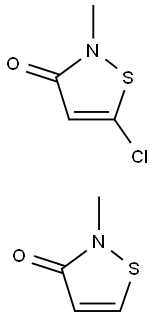
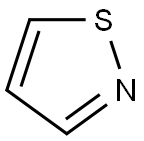
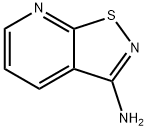

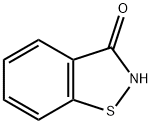
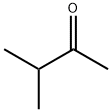


You may like
-
 METHYLISOTHIAZOLINONE 99%View Details
METHYLISOTHIAZOLINONE 99%View Details -
 2682-20-4 98%View Details
2682-20-4 98%View Details
2682-20-4 -
 2682-20-4 98%View Details
2682-20-4 98%View Details
2682-20-4 -
 2682-20-4 2-Methyl-4-isothiazolin-3-one 98%View Details
2682-20-4 2-Methyl-4-isothiazolin-3-one 98%View Details
2682-20-4 -
 13463-67-7 Titanium Dioxide 99%View Details
13463-67-7 Titanium Dioxide 99%View Details
13463-67-7 -
 143-07-7 99%View Details
143-07-7 99%View Details
143-07-7 -
 20776-67-4 99%View Details
20776-67-4 99%View Details
20776-67-4 -
 acid blue 113, acid navy blue , wool navy blue 0View Details
acid blue 113, acid navy blue , wool navy blue 0View Details
3351-05-1